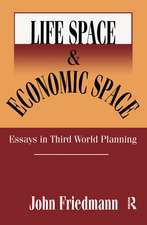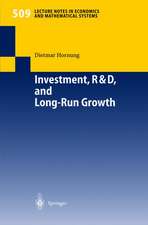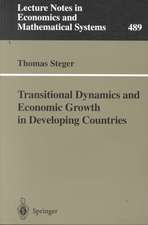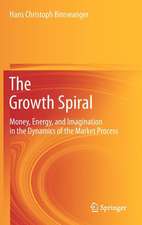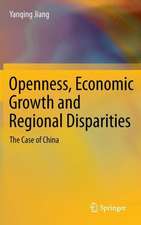Economic Growth and Development: A Dynamic Dual Economy Approach: Springer Texts in Business and Economics
Autor Sibabrata Das, Alex Mourmouras, Peter Rangazasen Limba Engleză Paperback – 22 dec 2018
| Toate formatele și edițiile | Preț | Express |
|---|---|---|
| Paperback (1) | 474.50 lei 6-8 săpt. | |
| Springer International Publishing – 22 dec 2018 | 474.50 lei 6-8 săpt. | |
| Hardback (2) | 518.35 lei 38-45 zile | |
| Springer International Publishing – 28 aug 2018 | 518.35 lei 38-45 zile | |
| Springer International Publishing – 18 sep 2024 | 654.62 lei 6-8 săpt. |
Din seria Springer Texts in Business and Economics
-
 Preț: 360.01 lei
Preț: 360.01 lei -
 Preț: 548.24 lei
Preț: 548.24 lei -
 Preț: 359.92 lei
Preț: 359.92 lei - 15%
 Preț: 642.51 lei
Preț: 642.51 lei - 19%
 Preț: 509.83 lei
Preț: 509.83 lei -
 Preț: 367.40 lei
Preț: 367.40 lei - 15%
 Preț: 562.31 lei
Preț: 562.31 lei -
 Preț: 374.87 lei
Preț: 374.87 lei - 17%
 Preț: 363.97 lei
Preț: 363.97 lei -
 Preț: 374.14 lei
Preț: 374.14 lei -
 Preț: 382.19 lei
Preț: 382.19 lei - 19%
 Preț: 465.60 lei
Preț: 465.60 lei - 13%
 Preț: 490.92 lei
Preț: 490.92 lei -
 Preț: 401.78 lei
Preț: 401.78 lei - 15%
 Preț: 562.12 lei
Preț: 562.12 lei - 17%
 Preț: 490.70 lei
Preț: 490.70 lei - 19%
 Preț: 534.43 lei
Preț: 534.43 lei - 17%
 Preț: 363.29 lei
Preț: 363.29 lei -
 Preț: 361.88 lei
Preț: 361.88 lei - 20%
 Preț: 693.45 lei
Preț: 693.45 lei -
 Preț: 361.11 lei
Preț: 361.11 lei -
 Preț: 185.09 lei
Preț: 185.09 lei - 17%
 Preț: 366.15 lei
Preț: 366.15 lei - 15%
 Preț: 479.55 lei
Preț: 479.55 lei - 20%
 Preț: 693.81 lei
Preț: 693.81 lei -
 Preț: 473.41 lei
Preț: 473.41 lei -
 Preț: 555.90 lei
Preț: 555.90 lei - 17%
 Preț: 522.64 lei
Preț: 522.64 lei - 20%
 Preț: 694.02 lei
Preț: 694.02 lei - 13%
 Preț: 447.86 lei
Preț: 447.86 lei - 18%
 Preț: 754.79 lei
Preț: 754.79 lei - 17%
 Preț: 491.51 lei
Preț: 491.51 lei -
 Preț: 360.45 lei
Preț: 360.45 lei - 17%
 Preț: 460.16 lei
Preț: 460.16 lei - 15%
 Preț: 597.20 lei
Preț: 597.20 lei - 17%
 Preț: 523.85 lei
Preț: 523.85 lei - 17%
 Preț: 459.66 lei
Preț: 459.66 lei -
 Preț: 548.52 lei
Preț: 548.52 lei - 20%
 Preț: 571.11 lei
Preț: 571.11 lei - 17%
 Preț: 431.53 lei
Preț: 431.53 lei -
 Preț: 320.05 lei
Preț: 320.05 lei - 8%
 Preț: 428.31 lei
Preț: 428.31 lei - 15%
 Preț: 650.55 lei
Preț: 650.55 lei
Preț: 474.50 lei
Preț vechi: 558.23 lei
-15% Nou
Puncte Express: 712
Preț estimativ în valută:
90.79€ • 94.80$ • 75.14£
90.79€ • 94.80$ • 75.14£
Carte tipărită la comandă
Livrare economică 04-18 aprilie
Preluare comenzi: 021 569.72.76
Specificații
ISBN-13: 9783030078485
ISBN-10: 3030078485
Pagini: 356
Ilustrații: X, 356 p. 130 illus. in color.
Dimensiuni: 155 x 235 mm
Greutate: 0.51 kg
Ediția:Softcover reprint of the original 2nd ed. 2018
Editura: Springer International Publishing
Colecția Springer
Seria Springer Texts in Business and Economics
Locul publicării:Cham, Switzerland
ISBN-10: 3030078485
Pagini: 356
Ilustrații: X, 356 p. 130 illus. in color.
Dimensiuni: 155 x 235 mm
Greutate: 0.51 kg
Ediția:Softcover reprint of the original 2nd ed. 2018
Editura: Springer International Publishing
Colecția Springer
Seria Springer Texts in Business and Economics
Locul publicării:Cham, Switzerland
Cuprins
1. Overview.- Part I. One-Sector Growth Models.- 2. Neoclassical Growth Theory.- 3. Fertility and Schooling.- 4. Government and Growth.- 5. Foreign Aid.- Part II Two-Sector and Dual Economies.- 6. Two Sector Growth Models.- 7. Wage and Fertility Gaps in Dual Economies.- 8. Physical Capital in Dual Economies.- 9. A Complete Dual Economy.- 10. Urbanization.- 11. Conclusion.- 12. Solutions to Exercises.- 13. Technical Appendix.
Recenzii
“Revised and expanded edition of a textbook for advanced undergraduates and graduate students provides an introduction to features of growth theory, explaining how the theory can be blended with historical data and case studies to consider sources of economic prosperity that may be used to help lagging countries prosper.” (Journal of Economic Literature, Vol. 59 (1), March, 2021)
Notă biografică
Peter Rangazas is professor of economics at IUPUI. He regularly publishes in academic economics journals including the American Economic Review, Review of Economics and Statistics, Journal of Monetary Economics, and Journal of Economic Growth. He coauthored a second book in the Springer Texts in Business and Economics series, the Macroeconomics of Corruption.
Sibabrata Das has received his Ph. D. in Economics from University of Sussex, U.K.; and M.A. from Johns Hopkins University, U.S.A. Dr. Das has taught graduate courses in statistics, econometrics, microeconomics and development economics, at North Bengal University, Vidyasagar University, and Burdwan University, in India. As a research economist for the Ghana macroeconomic team at the World Bank, he has worked on macroeconomic modeling, and projections for various policy papers and country operations projects. As a member of the country teams, Dr. Das has also actively participated in World Bank-IMF country missions in Ghana, Angola, and Grenada. As a staff member he has contributed to several of the World Bank-IMF publications over the years. Currently, at the International Monetary Fund, he works on various cross-country projects on growth, economic development, and important policy issues across the countries and regions of the world.
Alex Mourmouras is division chief in the Asia and Pacific department of the IMF where he has served as mission chief for Vietnam, Singapore and Malaysia. He was previously division chief in the IMF Institute for Capacity Development and economist in the Fund’s Policy Development and Review and Fiscal Affairs Departments. Before joining the IMF, Dr. Mourmouras served as assistant and associate professor of Economics and director of graduate studies, all at the University of Cincinnati. He holds a Ph.D in economics from the University ofMinnesota and a BA degree from Harvard College.
Sibabrata Das has received his Ph. D. in Economics from University of Sussex, U.K.; and M.A. from Johns Hopkins University, U.S.A. Dr. Das has taught graduate courses in statistics, econometrics, microeconomics and development economics, at North Bengal University, Vidyasagar University, and Burdwan University, in India. As a research economist for the Ghana macroeconomic team at the World Bank, he has worked on macroeconomic modeling, and projections for various policy papers and country operations projects. As a member of the country teams, Dr. Das has also actively participated in World Bank-IMF country missions in Ghana, Angola, and Grenada. As a staff member he has contributed to several of the World Bank-IMF publications over the years. Currently, at the International Monetary Fund, he works on various cross-country projects on growth, economic development, and important policy issues across the countries and regions of the world.
Alex Mourmouras is division chief in the Asia and Pacific department of the IMF where he has served as mission chief for Vietnam, Singapore and Malaysia. He was previously division chief in the IMF Institute for Capacity Development and economist in the Fund’s Policy Development and Review and Fiscal Affairs Departments. Before joining the IMF, Dr. Mourmouras served as assistant and associate professor of Economics and director of graduate studies, all at the University of Cincinnati. He holds a Ph.D in economics from the University ofMinnesota and a BA degree from Harvard College.
Textul de pe ultima copertă
This textbook is an introduction to the newer features of growth theory that are particularly useful in examining the issues of economic development. Growth theory provides a rich and versatile analytical framework through which fundamental questions about economic development can be examined. Structural transformation, in which developing countries transition from traditional production in largely rural areas to modern production in largely urban areas, is an important causal force in creating early economic growth, and as such, is made central in this approach. Towards this end, the authors augment the Solow model to include endogenous theories of saving, fertility, human capital, institutional arrangements, and policy formation, creating a single two-sector model of structural transformation. Based on applied research and practical experiences in macroeconomic development, the model in this book presents a more rigorous, quantifiable, and explicitly dynamic dual economy approach to development. Common microeconomic foundations and notation are used throughout, with each chapter building on the previous material in a continuous flow. Revised and updated to include more exercises for guided self study, as well as a technical appendix covering required mathematical topics beyond calculus, the second edition is appropriate for both upper undergraduate and graduate students studying development economics and macroeconomics.
Caracteristici
Revised and updated to include additional exercises, technical mathematical appendix, and solutions to all questions Develops dynamic two-sector models to explain sector differences in productivity, wages, hours worked, fertility, and saving rates, and how structural transformation impacts economic growth Augments the Solow model to include endogenous theories of saving, fertility, human capital, institutional arrangements, and policy formation Provides end-of-chapter questions to solidify main points for less advanced students and model-based problems for more advanced students



